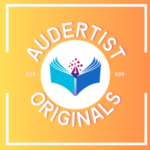Writing is an art form that takes on various shapes and styles depending on the genre. Whether you’re crafting a novel, a blog post, or an academic paper, understanding the formatting conventions of each genre is crucial for effective communication with your audience. In this comprehensive guide, we’ll explore formatting tips for different writing genres to help you present your work in a professional and engaging manner.
- Fiction Writing
- Novels and Short Stories
- Screenplays and Stage Plays
- Non-Fiction Writing
- Academic Papers and Essays
- Blog Posts and Articles
- Comparison Table: Formatting Conventions Across Genres
- Frequently Asked Questions (FAQs)
Fiction Writing
Novels and Short Stories
When it comes to fiction writing, formatting plays a crucial role in creating an immersive reading experience. Here are some tips to keep in mind:
- Manuscript Format: Most publishers and agents prefer manuscripts to be formatted in a specific way. Use a 12-point, easily readable font (such as Times New Roman or Courier), double-spaced lines, and 1-inch margins on all sides.
- Scene Breaks: To indicate a shift in time, location, or perspective, use a line break or a series of three hashtags (###) centered on a new line.
- Dialogue Formatting: Dialogue should be enclosed in double quotation marks, with a new line for each new speaker. The dialogue tag (e.g., she said) should be placed after the spoken line.
- Emphasis: Use italics for internal thoughts and emphasis. Avoid using all-caps or bold for emphasis, as it can be distracting.
Screenplays and Stage Plays
Screenplays and stage plays have their own unique formatting requirements:
- Scene Headings: Use a slugline to indicate the location and time of day for each scene (e.g., INT. KITCHEN – DAY).
- Action Lines: Describe the action and characters’ movements using present tense and proper capitalization.
- Dialogue: Character names should be capitalized and centered, followed by the dialogue.
- Parentheticals: Use parentheses to describe a character’s tone or action during dialogue (e.g., JOHN (smiling): “Hello, there.”).
Non-Fiction Writing
Academic Papers and Essays
In academic writing, formatting is essential for maintaining clarity and adhering to style guides:
- Citation Style: Follow the appropriate citation style (e.g., APA, MLA, Chicago) for in-text citations and reference lists.
- Headings and Subheadings: Use a clear hierarchy of headings and subheadings to organize your content.
- Footnotes and Endnotes: Use footnotes or endnotes for additional information or explanations that don’t fit in the main text.
- Tables and Figures: Properly label and format tables, figures, and other visual elements according to the style guide.
Blog Posts and Articles
When writing blog posts or articles, proper formatting can enhance readability and engagement:
- Headings and Subheadings: Break up your content into digestible sections with descriptive headings and subheadings.
- Bullet Points and Numbered Lists: Use bullet points or numbered lists to present information in a concise and organized manner.
- Bold and Italics: Use bold and italics sparingly to emphasize important points or quotes.
- Images and Videos: Incorporate relevant images, videos, or other media to enhance your content and break up large blocks of text.
Comparison Table: Formatting Conventions Across Genres
| Genre | Line Spacing | Font | Margins | Heading Styles | Citation Style |
| Fiction (Novels, Short Stories) | Double | 12-point, readable (e.g., Times New Roman, Courier) | 1-inch all sides | N/A | N/A |
| Screenplays, Stage Plays | N/A | 12-point, Courier | N/A | Scene Headings (e.g., INT. KITCHEN – DAY) | N/A |
| Academic Papers, Essays | Double | 12-point, readable (e.g., Times New Roman) | 1-inch all sides | Heading levels (e.g., 1.1, 1.1.1) | APA, MLA, Chicago, etc. |
| Blog Posts, Articles | 1.5 or Double | 14-16 point, readable (e.g., Arial, Georgia) | N/A | H1, H2, H3, etc. | N/A |
Frequently Asked Questions (FAQs)
Can I use a different font for my fiction manuscript?
While some publishers may accept alternative fonts, it’s generally recommended to stick with standard, easy-to-read fonts like Times New Roman or Courier. This ensures consistency and readability for editors and agents.
How do I format block quotes in academic papers?
Block quotes are typically indented and single-spaced. Follow the specific style guide’s instructions for block quote formatting, as well as proper citation.
Should I use headings and subheadings in blog posts?
Yes, using descriptive headings and subheadings can significantly improve the readability and scanability of your blog posts. Headings also help search engines understand the structure and content of your post.
How do I format dialogue in a screenplay?
In screenplays, dialogue is formatted with the character’s name centered and capitalized, followed by the dialogue. Any parenthetical descriptions or actions are placed below the character’s name.
Can I use bullet points or numbered lists in fiction writing?
While not common in traditional fiction writing, bullet points or numbered lists can be used sparingly for specific purposes, such as listing items or presenting a character’s thoughts or instructions.
How do I format citations in an academic paper?
Follow the specific citation style guide (e.g., APA, MLA, Chicago) for formatting in-text citations, reference lists, and bibliographies. These style guides provide detailed rules for citing various types of sources.






